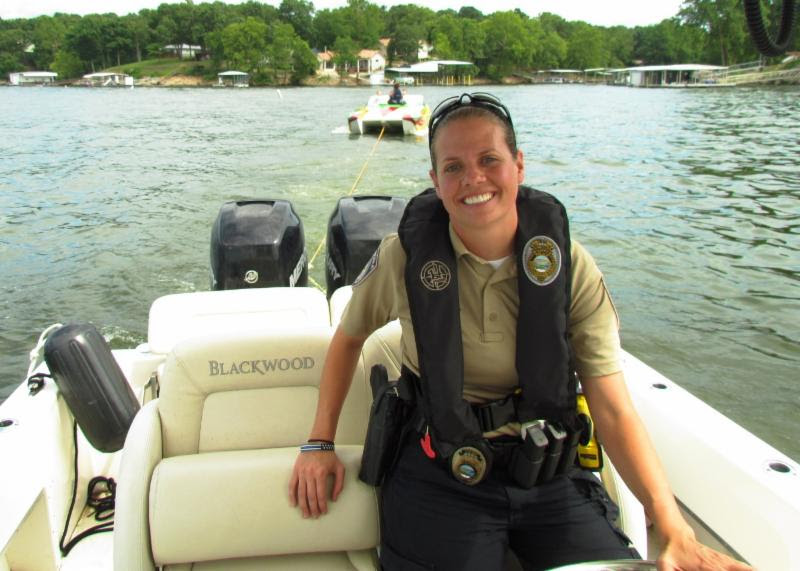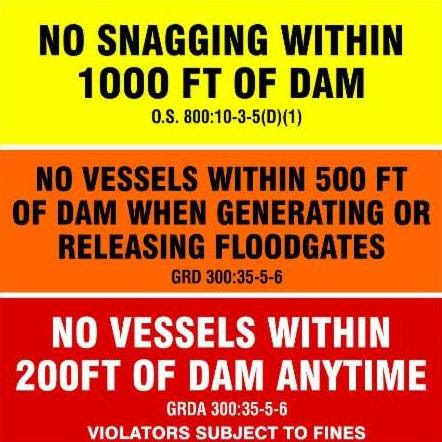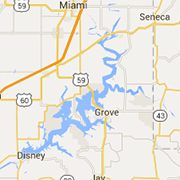VEGETATION MANAGEMENT PLAN
300:35-27-3. Permits
(a) Individuals or entities wishing to engage in a Vegetation Management Activity are required to apply for and obtain a permit from the GRDA Office of Ecosystems Management before conducting any such activities.
(b) In order to be eligible to apply for a permit, an individual or entity must be the owner of the land adjacent to the GRDA land for which the permit is sought. If an applicant is not the adjacent landowner, the landowner must consent to the application.
(c) GRDA will consider applications to allow the removal of trees, shrubs, and vegetation for certain conditions and purposes including:
(1) Hazardous trees which pose substantial risk to the public, adjacent property, or properly permitted structures on Project Land.
(2) Trees, shrubs, and vegetation which are dead, dying, or diseased.
(3) Trees, shrubs, and vegetation considered to be an invasive or noxious species by the Office of Ecosystems Management.
(4) Trees, shrubs, and vegetation which may contribute to unsafe conditions by creating visibility problems (sight line) near waterways, roadways, trails, paths, or other access points, provided nothing in this section shall allow removal of vegetation to improve views of docks from land.
(5) Trees that are crowded from natural competition or that were over planted may be selectively removed to maintain spacing for optimal tree growth and function.
(6) Trees, shrubs, and vegetation may be selectively removed to create and maintain an access corridor between an adjacent landowner's property and the shoreline. Corridors must consist of natural materials such as native grass, wood chips, or gravel/crushed rock. Placement of such must not involve earth moving or soil disturbance and must minimize ground disturbance and vegetation removal.
(7) Trees, shrubs, and vegetation may be selectively removed when necessary to facilitate another permitted use of Project Land.
(8) Trees, shrubs, and vegetation may be selectively removed for the creation and/or maintenance of a manicured lawn or for general landscaping purposes. (d) GRDA will consider applications to allow the pruning or trimming of trees, shrubs, and vegetation for certain conditions and purposes including:
(1) Hazardous sections which pose substantial risk to the public, adjacent property, or properly permitted structures on Project Land.
(2) Dead, dying, or diseased sections to improve appearance and health.
(3) Pruning of trees for crown cleaning, crown thinning, and crown restoration.
(4) Pruning of trees, shrubs and vegetation to enhance the view of the lake.
(5) Pruning or trimming of trees, shrubs and vegetation for the creation and/or maintenance of a manicured lawn or for general landscaping purposes.
(e) GRDA will consider applications to allow for other Vegetation Management Activities including:
(1) Landscape plantings.
(2) Removal or pruning for public utility easements.
(3) Planting, removal, or pruning for shoreline stabilization purposes.
(f) In determining whether to grant a permit, the following will be considered and weighed as appropriate:
(1) Current permitted uses in the surrounding area.
(2) The aesthetic and biological impacts of pruning or removal on the vegetation.
(3) The potential for replacement with more desirable vegetation.
(4) The potential impacts on the aesthetic quality of the surrounding area, with consideration given to the views from the land and from the water.
(5) Potential environmental impacts on soils, shoreline/slope stability, water quality, and wildlife habitat.
(6) Special consideration for unique varieties, vegetation of great age, rare vegetation, or vegetation of horticultural or historical significance.
(7) Special consideration for native vegetation in undeveloped landscapes.
(g) Permit applications shall be subject to the following actions:
(1) Approved as submitted.
(2) Approved with modifications/conditions. Examples of modifications or conditions that may be placed on a permit include limiting the allowed activities, requiring activities be performed in a specific manner to minimize impact, and requiring mitigation or other enhancement measures.
(3) Rejected.
(h) Permits shall be valid for one year from the date of issuance and all Vegetation Management Activity authorized must be completed within that period.
(i) No permit shall be required for a utility provider possessing an easement on Project Land to perform Vegetation Management Activities necessary to exercise its rights pursuant to that easement.

























